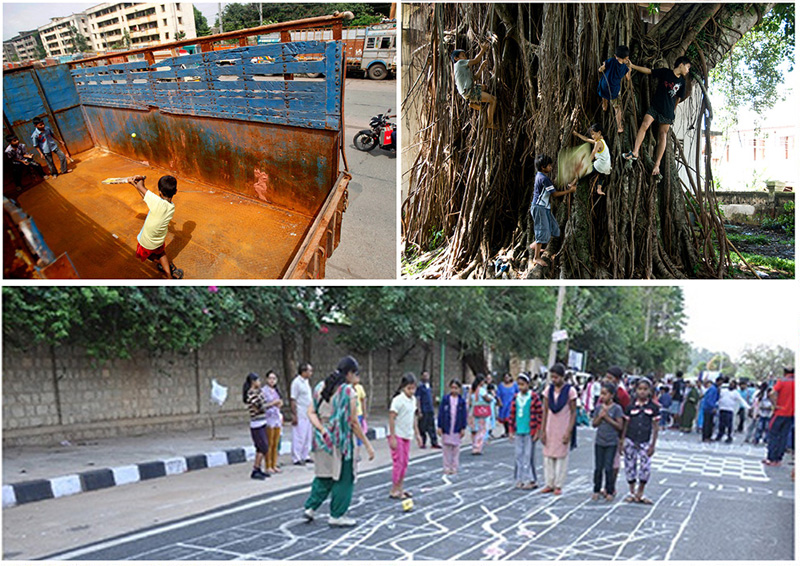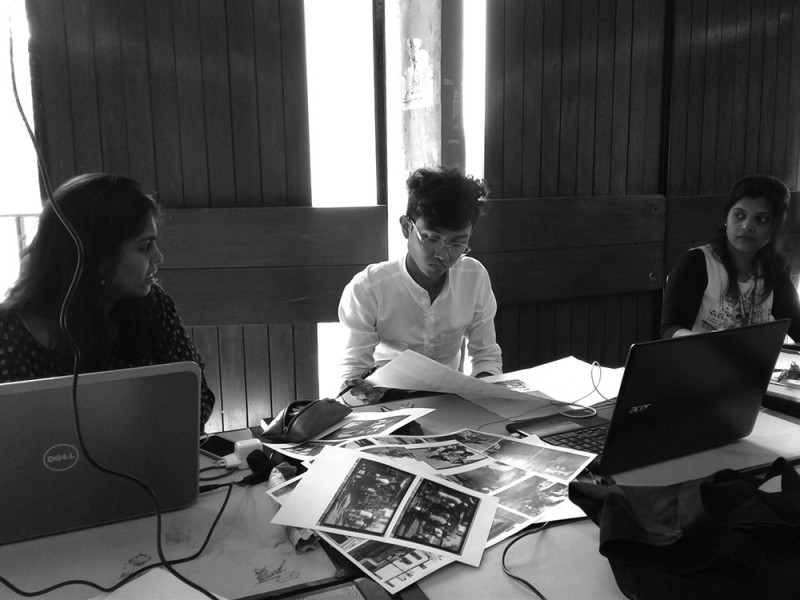Feb 9, 2017
The methodology of the workshop on how to read a city is completely different to what they normally teach at university. In this workshop the spatial research is done through playful activities. It is a totally different way of looking at the city, understanding it and engaging with it.
The participants went to two locations to put the methodology into practice: the old town of Ahmedabad, with its narrow winding streets, and a variety of squares where people live and work. And Azad Society, a more formal neighbourhood in Ahmedabad with mostly housing estates, except for one small part where there is a slum settlement. Here, living and working are also intertwined.
What did the participants experience while playing cricket and football with the locals? When they hopscotch in the streets? Or just blow bubbles in the air?
The scale of space determines the amount and type of interaction that takes place between people in this space: smaller area tend to generate more interaction. The game changes when the size of space changes. It is perfectly possible to play cricket in a narrow street, or in a space divided by a road. Children tend to play close to home. And participants learned the meaning of surface: a brick wall isn’t just a brick wall.

Nov 22, 2016
An introduction to the city through the culture of play
“City air makes you free” - medieval German saying
How does a city find release? We invite visiting participants to explore the city of Ahmedabad through the culture of play as observed in its streets, neighborhoods and open spaces.
Play is a multi-sensorial experience of space; through play one experiences the city not only with one’s eyes, but up close, with the body. It emphasizes an active, performative experience of space. Quentin Stevens observes in his study of urban spaces (The Ludic City), that urban play is a mode of engagement with people, places and built forms, and of experimenting and developing relationships with them. Urban play is often spontaneous and improvisational; the choices of locations are opportunistic, revealing the physical characteristics and potentials of the built environment, often disregarding the representational ones. It offers a critique from within (Lefebvre), a critique through which we develop new social practices.
Objectives:
• Map the city as potential ground[s] for play (the site will be selected from the cross-section established in the Global Brief)
• The mappings will include the types of play, the diversity of play (age, gender, time of day etc), the mode of play , the sites of play and the cultural narratives around the play[s].
• Invent a game, and locate it within the workshop site[s] based on the mappings. The game maybe an adaptation of the participant’s favored outdoor game/ sport or a form of play observed during the mapping.
• Final outcome of the workshop will be a staging of the invented play in-situ, accompanied by mappings of the game developed that demonstrates the methodology of the workshop.




